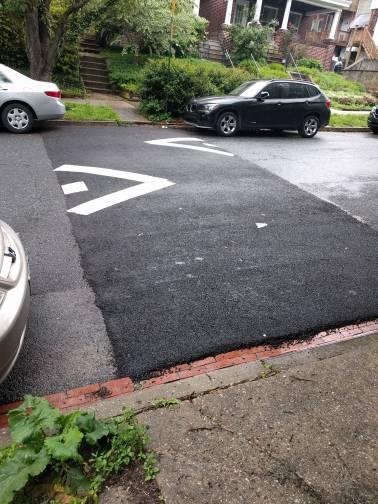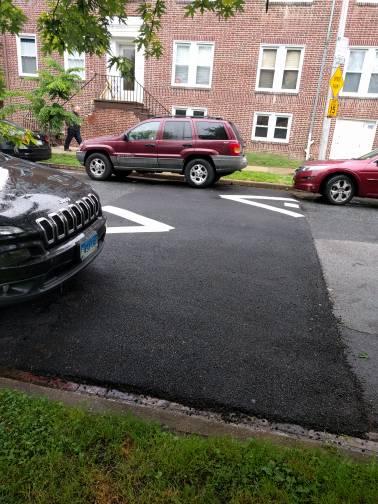Last night, the engineering firm tasked with developing the Midtown / Mount Royal Streetscape project revealed 95% design plans at a community meeting hosted by Baltimore City Department of Transportation.
This project has been in the works for four years, and the last project meeting was hosted in 2014. In fact, Bikemore's first major advocacy push as an organization was back in 2012, for inclusion of bike facilities in this project.
In January 2016, we provided a detailed overview of this project, and stated that "red-lined" design changes (changes added once construction has begun) are critical to making this a safe and worthwhile project.
None of these major recommendations have made it into the project, nor have the recommendations of other key stakeholders and community members.
We need to reconfigure the I-83 off-ramp.
A reconfiguration of the I-83 offramp onto Mount Royal Avenue must be considered. Currently, the design asks bicyclists and pedestrians to cross a highway offramp that will only be signaled with a flashing yellow warning beacon. This highway offramp was never intended to be permanent, and it should be closed as a part of this project. At minimum, the offramp needs to be reconfigured where it interacts with the cycle track.
1) Present 2) Ramp Closure 3) Reconfigure Ramp
We need to extend the project up to North and down to Guilford.
The protected bike lane currently ends several blocks short of North Avenue. This will provide an incomplete connection to the lanes we are advocating for in North Avenue Rising. The protected lane also currently ends just before Saint Paul Street, and should be extended fully to connect to the protected facility and lanes at Guilford and Fallsway. Federal dollars cannot easily be used to fund an adjacent facility to the Jones Falls Trail, so the city should step in with the red lined extra work funds to extend the facility here.
Connections to Maryland and Cathedral are not well defined.
The connection to the Maryland Avenue cycle track is not well defined. We have had instances in Baltimore where two separate engineering firms have worked on two separate projects, and failed to plan for overlap, leading to bump-outs being installed into bicycle facilities. No clear answers have been provided by the engineers about coordination between these projects.
A bump out installed over a bike lane near Druid Hill Park
The intersection of the project with Cathedral Street is also concerning. Early project renderings installed a traffic circle that allowed for bicyclists and drivers to better navigate the intersection, but that has since been removed. Bicyclists in the current plans must dismount and cross the street from the protected facility on Mount Royal over a crosswalk to Cathedral.
Confusing intersection at Cathedral and Mount Royal requiring multiple dismounts
There's no reason to have two travel lanes on Mount Royal.
The project is cutting down median width, removing parking, and taking sidewalk space to try and accomodate two lanes of travel alongside a protected bicycle facility. This is one of the largest sources of discontent with community members. Removing a vehicular travel lane would allow for parking to be restored where it is currently lost throughout the project, while still retaining a protected bike lane and wider medians. These are wins for everyone.
These fixes are necessary before this project begins construction.
Bikemore will work with neighborhood organizations, Councilman Costello, and stakeholder institutions to advocate for these changes to be red-lined into this project so construction is not significantly delayed.
It is frustrating to see a flawed project brought to the table when feedback that could have made this project great was submitted over the past four years.
This is the challenge with projects in Baltimore taking so long to come to fruition--design standards for livable cities are constantly changing. We have a far more progressive DOT than we did four years ago. See the pop-up cycle track announced today on East Pratt as an example. However, when projects like the Midtown / Mount Royal streetscape take half a decade to plan, they are unable to meet the demands of an evolving city.
We will keep you posted on ways to vocalize improvements to this facility, and your support of Bikemore enables us to continue to advocate on your behalf.












